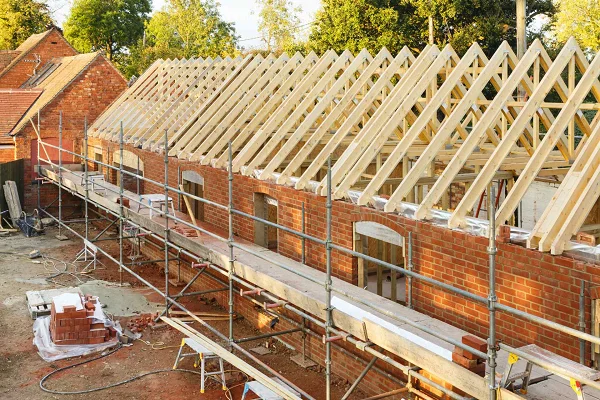Just 1% of UK Land Utilised for Residential Developments

Once again, it is looking increasingly unlikely that the UK government will come close to meeting its own lofty housebuilding targets. Available inventory (particularly where affordable housing is concerned) is at an all-time low, and the country’s escalating housing crisis shows no signs of abating.
While all this is going on, a study conducted by Unlatch has shed light on just how much of the UK’s total land space is being used for residential developments. Or should that be, how little space is being utilised for such purposes?
Across the UK, there is an estimated 13.3 million hectares of available space. Of which, only 152,380 hectares of space have so far been used to develop residential properties, equating to a mere 1.1% of all available space.
Unlatch set out to determine which local councils across the country are making the most efficient use of the space they have available. And in doing so, we discovered that just under 99% of all UK land is being used for entirely non-residential purposes.
The figures should come as no less than shocking to anyone who understands the true extent of the housing crisis and the near-impossibility of getting on the UK housing ladder for the first time; fresh calls have been directed at the government to significantly step up housebuilding over the coming years, even though the likelihood of its own targets being reached is practically zero.
The new housing supply remains significantly lower than the government’s ambition of 300,000 new homes per year, with just 216,000 new homes having been supplied in 2021.
Public perceptions are misguided
Commenting on the findings, the head of the UK for Unlatch, Lee Martin, said that while most people think a sizeable proportion of UK land space has been allocated for residential developments, this really could not be further from the truth.
“There seems to be a common misconception amongst the public that the nation is bursting at the seams when it comes to the number of homes already built and that we simply have no available land left to address the current housing crisis,” he said.
“This simply isn’t the case, and, in fact, land used for residential development currently accounts for just over one percent of the nation’s total land area.”
“Of course, in major urban areas, this percentage is far higher, particularly in London, where the demand for housing is greater due to a larger population.”
“However, in some areas, residential development accounts for a tiny fraction of total land available, and it’s ironically in these areas where current homeowners are often most passionately against the construction of new homes.”
Regional land usage differences
The figures from Unlatch suggest that land usage for residential purposes across the UK is fairly consistent. However, there are some areas where a much larger or smaller proportion of available land is being used for such purposes.
For example, the highest land usage levels were recorded in the North West and the South East, both coming out at 1.4% land usage; elsewhere, the lowest land usage level was recorded in the Southwest of England, with just 0.7% of available land being used for residential developments.
Land usage rates in busy urban centres were the highest of all, with London recording a total combined residential land usage rate of 10.1%. Chelsea and Kensington had the highest land usage levels of all, with 22.3% of the space available being used for residential developments.
Ryedale, Richmond shire, Craven, West Devon, and Northumberland featured at the opposite end of the scale with a 0.2% utilisation rate, along with Eden, where just 1% of the land has been used for residential developments.




 0116 402 7982
0116 402 7982